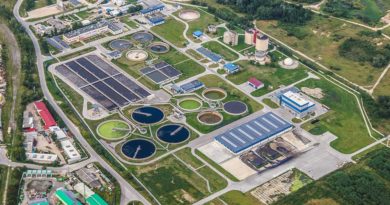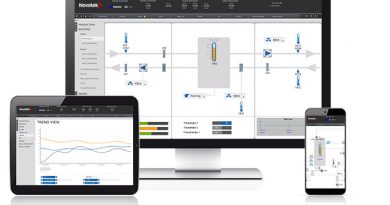What evolving edge means to remote stations
The utilities sector relies on remote assets and stations, whether they are pumping stations that keep water circulating in a network or electrical substations responsible for transforming power ready for supply into homes and offices. The difficulty for utilities operators has traditionally been managing these remote stations in an efficient and cost-effective way. Fortunately, developments in edge systems can help operators overcome this challenge.
Asset management is integral to utilities businesses. Assets must remain operational to ensure that customers receive a satisfactory and uninterrupted service, and regulatory bodies apply ever-increasing pressure on operators to maintain good qualities of service. Regulators often push operators to not only provide continuous supply to customers, but to do so efficiently while keeping costs controlled.
For example, in the water sector, the UK regulator Ofwat routinely publishes a price review that outlines a revised framework for operators. PR19, the latest review that came into effect on April 1, 2021, set operators the goal of reducing their bills by 12 per cent by 2025. This would amount to a £50 reduction in the average household annual water bill. Alongside this, the regulator is pushing operators to embrace innovation to improve their performances, with incentives and funding in place to encourage this.
It’s because of these pressures that the evolving edge is proving increasingly important for operators. The conventional approach to maintaining remote stations and assets would involve sending technicians to them, which produces labour costs and is time intensive. Introducing edge devices and control systems to these stations allows operators to remotely measure, monitor and control the performance of assets with increasing detail and accuracy.
With modern edge control systems in place, it’s possible to automate several of the process adjustments that keep remote stations functional. These systems, along with the collection and storage of performance data, makes it possible to manage and maintain remote assets in an efficient, strategic way.
However, the introduction of edge systems in utilities is not without its own challenges. One of the core ideas behind edge deployments is that asset and equipment data can be collected and pushed to an analytical platform, often a cloud-based system accessed by network managers elsewhere. Maintenance can then be managed more intelligently.
The sheer volume of data produced in these stations, which is pushed to cloud servers in real-time, leads to very high cloud storage costs due to the message-based charging structure of many cloud providers. Across an entire network of thousands of assets, the costs for operators are exceptionally high — making it harder to increase edge deployment while simultaneously reducing costs.
To overcome the issue of elevated costs from edge deployments, network managers need to use modern edge technology to open up options. If an edge system has the capacity to accumulate raw data, this makes it easier to send data to cloud storage in a larger, single instance.
Alternatively, more advanced edge systems — such as a Historian system — can aggregate data from several sources and perform some level of compression or analysis before sending to cloud storage. Similarly, it could be that some raw data does not need to be sent to the cloud, so the ability of a system to parse data at the edge can reduce cloud requirements.
Both options allow operators to get the full benefit of edge technologies in remote stations, without high cloud costs. Not only can modern edge control systems be accessed remotely by technicians or be set to automatically make certain process adjustments, but the data collection capabilities of edge computing can be managed in a cost-effective way.
As edge technology continues to evolve and offer greater computing capacity, operators will be able to manage remote stations and assets with increasing efficacy and efficiency, cost-effectively. With the utility service quality expectations from customers and regulators increasing year on year, the evolving edge offers an ideal solution to long-standing challenges.



